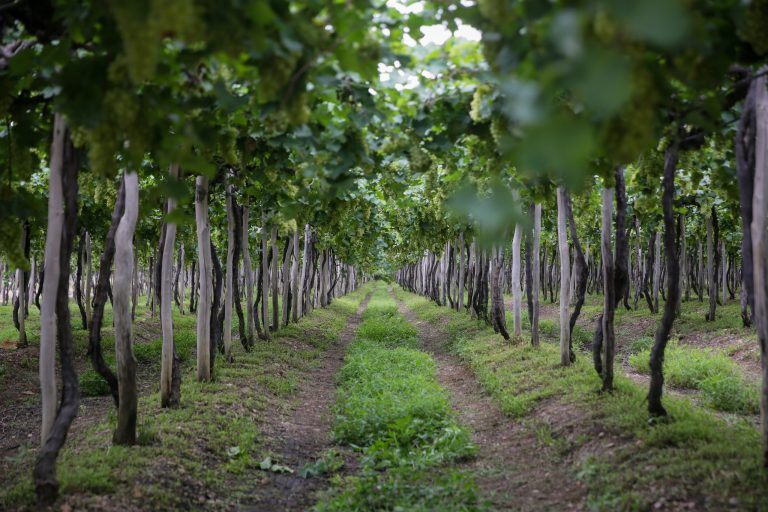Casa Nova – When driving into Ouro Verde Farm in Casa Nova, Bahia state, you go through a road flanked by vineyards. At the end of it, several warehouses hold storage tanks, grape processing lines, a cellar, and the headquarters of Bahia-based unit of winery Miolo. From the unlikely semi-arid climate of Bahia come grape juices, wines, sparkling wines, and wine distillates made by one of the leading Brazilian wineries.

The Ouro Verde Farm was bought by Miolo and other partners in 2001 from a Japanese farmer who had been growing wine grapes there. It was the company’s bet on investing in lands outside the climate deemed ideal for the wine varietals like the one in Rio Grande do Sul
In the southernmost state’s Bento Gonçalves, Italian immigrant Giuseppe Miolo had started planting after arriving in Brazil in 1897. The business was passed on from generation to generation until 1989, when Miolo started producting its own wines instead of just supplying fine grapes.
In 2001 Miolo Wine Group superintendent Adriano Miolo decided for an investment far from the company’s vineyards in Vale dos Vinhedos, Campanha Meridional and Campanha Central in Rio Grande do Sul – he went to Casa Nova in Brazil’s northeastern semi-arid region to expand the plantation of its previous owner.
Read more:
Beqaa Valley reinvents Lebanese wine, exports to Brazil
The equivalent of 3 million bottles of the 15 million produced by Miolo come from there every year – they are wines, distillates, and sparkling wines made from traditional grapes from milder climates. Grenache, mourvèdre, syrah (which usually result in reds), sauvignon blanc, chenin blanc, verdejo, and moscato (used to make whites) are some of the grape varietals harvested there that results in a whole family of products, one of them named after the farm’s vineyard Terranova.
Miolo’s 40-year-old plants
Miolo oenologist Eloiza Teixeira says there are plants that still bear fruit even 40 years after they were first planted. “Here we have the chance to make more aromatic wines of a remarkable character,” she says. “Some vines here are over 40 and are very yielding,” Teixeira explains, while a machine separates grapes from bunches and prepares them for pressing.
In a room with 12 stainless-steel fermentation tanks, the stored liquid ferments until it naturally becomes a sparkling wine. There you can taste and smell the floral aroma of the beverage, which will go through a last filtering before moving on to bottling.
In another warehouse, American oak barrels store a clear beverage like water – wine distillate. It sits for 15 years inside wood vessels, where it ages, acquires a pale yellow shade, and woodsy flavors and aromas.
Wines from there hit the shelves in Brazil and elsewhere, and so does the juice made from Isabel and Magna grapes, another product that comes from Miolo’s lands in the São Francisco Valley.
Translated by Guilherme Miranda




